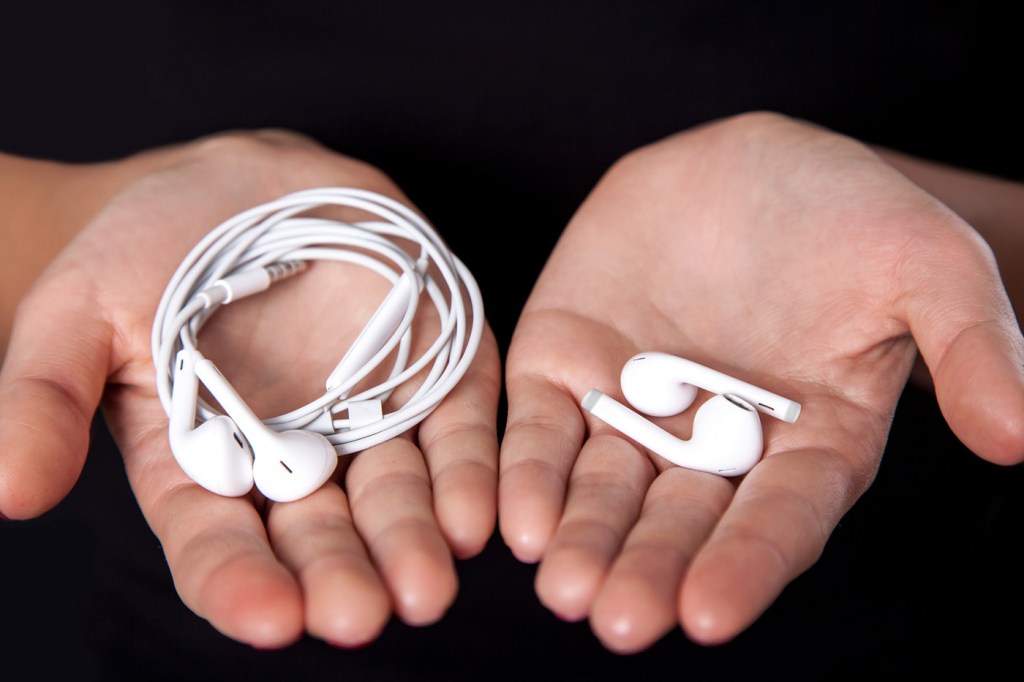3Qs: Why Bluetooth headphones are better than you might think

Later this month, Apple will release its first truly wireless earbuds. Priced at $159, the so-called AirPods will be driven by the company’s proprietary W1 chip and powered by Bluetooth technology, a standard for transmitting data over short distances via radio waves. Apple claims that the AirPods will provide rich, high-quality audio, but audiophiles have long questioned Bluetooth’s efficacy, turning up their noses at its supposedly inferior sound quality.
 To get the lowdown on the pros and cons of Bluetooth, we turned to Tommaso Melodia, associate professor in the Department of Electrical and Computer Engineering, where he directs the Wireless Networks and Embedded Systems Laboratory. Here, he explains the science behind Bluetooth headphones and how their quality compares to wired devices.
To get the lowdown on the pros and cons of Bluetooth, we turned to Tommaso Melodia, associate professor in the Department of Electrical and Computer Engineering, where he directs the Wireless Networks and Embedded Systems Laboratory. Here, he explains the science behind Bluetooth headphones and how their quality compares to wired devices.
First of all, how do Bluetooth devices work?
Bluetooth is a family of standards for wireless transmission of digital data over short distances using short-wavelength radio waves at frequencies between 2.4 and 2.485 gigahertz. Like Wi-Fi, Bluetooth operates over frequency bands that don’t require a license—basically everybody can transmit at low power over these frequency channels without a special permit from the government. The transmission technology used by Bluetooth devices is called frequency-hopping spread spectrum. Two Bluetooth devices that exchange information do so by continuously “hopping” over different frequency channels in a synchronized fashion, 800 times per second. In this way, they can avoid generating or receiving “too much” interference from other devices operating over a specific channel. When the number of Bluetooth devices simultaneously transmitting at the same location increases, the amount of interference that they generate to one another on the radio channel increases as well, which might result in performance degradation and, if Bluetooth is being used for real-time media streaming, lower quality for the user.
While the first generation of Bluetooth devices offered data rates below one million bits per second, Bluetooth version 4.2, which came out in December 2014, promises speeds up to 25Mbit/s over a distance of at least 200 feet. Bluetooth version five, just announced in June 2016, will further increase the range and double the data rate. Bluetooth is expected to be a key building technology in the upcoming “Internet of Things” ecosystem.
Some tech critics have censured Apple for removing its headphone jack in the iPhone 7 and turning to Bluetooth technology, with one saying that “Apple sure doesn’t seem to care that much about audio quality.” From a technical standpoint, is Bluetooth audio really inferior to wired audio?
Bluetooth wireless links have data rates sufficient to transfer high quality audio. To articulate an answer to this question, however, we need to understand how audio signals are transmitted and played out.
Audio signals are stored digitally in our phones (as sequences of 0s and 1s). With wired headphones, the digital signals are first fed into a DAC (digital-to-analog converter) built inside the phone to convert the digital signals into analog signals, which are further transmitted (in an analog fashion) into the headphone for playout via a standard 3.5-millimeter headphone jack.
Bluetooth, instead, does not convert digital audio to the analog domain before sending it to the earphone—audio signals are transmitted digitally over the wireless link. So when the digital audio is received at the earphone, it is basically identical to the digital audio stored in the phone. The Bluetooth earphone uses a DAC built inside the earphone itself to convert the received digital audio in the analog domain so that it can be played.
Therefore, the final playout audio quality largely depends on the quality of the DAC built either inside the phone or the earbuds. Because of limitation in size, it may not be easy to incorporate high quality DACs inside an earbud. This is one of the key technology factors that affect the audio playout quality. Clearly, like all electronic devices, DACs get smaller and less expensive with time. High-quality earphones can have exactly the same audio quality as a wired earphone, as long as the DAC used is of the same or comparable quality. Other factors to consider may include interference from other co-located radio devices in the same unlicensed radio band, including Bluetooth, Wi-Fi, baby monitors, and even microwave ovens.
A recent report from the NPD Group’s Retail Tracking Service shows that Bluetooth headphone sales are on the rise, suggesting that users might not care about sound quality as much as they do about convenience. What’s more, many Bluetooth headphone users typically sport the wireless devices in particularly loud places, where a higher resolution level might not even be noticeable. For the lay music fan in 2016, are there any compelling reasons to eschew Bluetooth headphones in favor of traditional headphones?
Except for factors not strictly related to technology, like pricing, I don’t see any compelling reasons not to use Bluetooth-based headphones. Interference from other devices might be a concern, but mostly in crowded spaces. When earphones are used in crowded places like gyms and airports, where coexisting Wi-Fi or Bluetooth devices may create significant interference, Bluetooth links may be degraded, which may potentially result in higher playout delay or interruptions.





